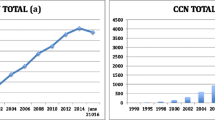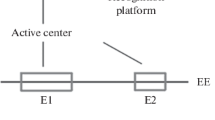Abstract.
HERC proteins are defined as containing both HECT and RCC1-like domains in their amino acid sequences. Six HERC genes have turned up in the human genome which encode two different sorts of polypeptides: while the small HERC proteins possess little more than the two aforementioned domains, the large ones are giant proteins with a plethora of potentially important regions. It is now almost 10 years since the discovery of the first family member and information is starting to accumulate pointing to a general role for these proteins as ubiquitin ligases involved in membrane-trafficking events. In this review, the available data on these six members are discussed, together with an account of their evolution.
Similar content being viewed by others
Author information
Authors and Affiliations
Corresponding author
Additional information
Received 16 March 2005; received after revision 13 April 2005; accepted 28 April 2005
Rights and permissions
About this article
Cite this article
Garcia-Gonzalo, F.R., Rosa, J.L. The HERC proteins: functional and evolutionary insights. CMLS, Cell. Mol. Life Sci. 62, 1826–1838 (2005). https://doi.org/10.1007/s00018-005-5119-y
Published:
Issue Date:
DOI: https://doi.org/10.1007/s00018-005-5119-y




